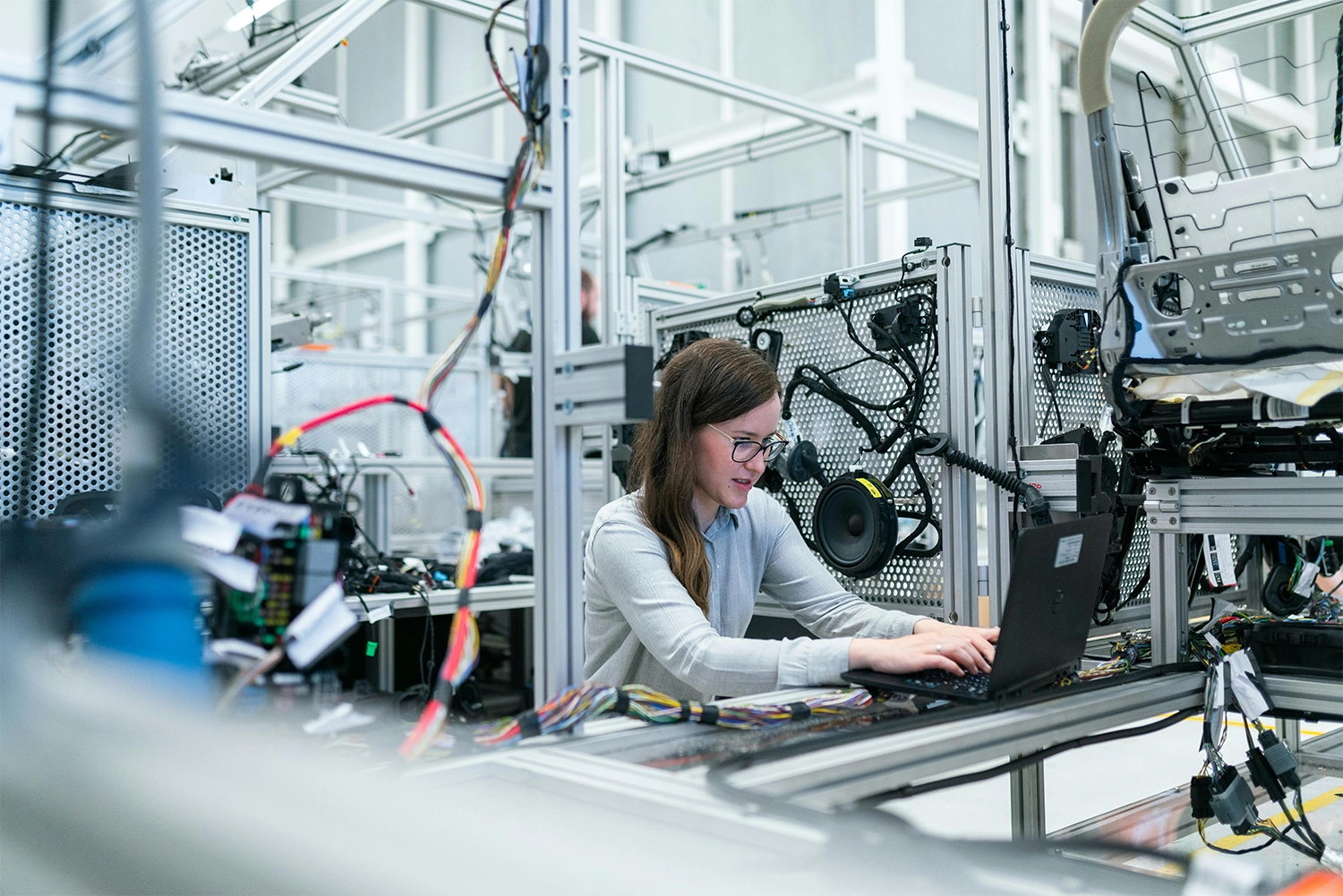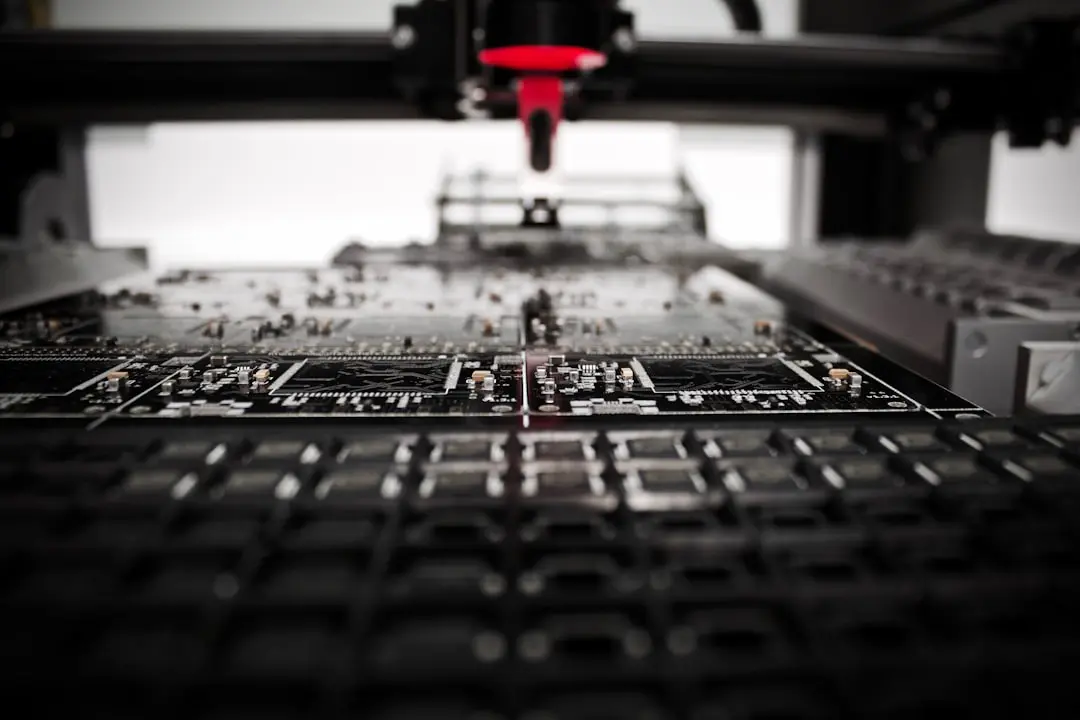
Scaling a manufacturing business often feels like navigating uncharted waters, especially with the constant evolution of industry standards and market demands. While traditional methods have their place, sometimes it’s the unconventional strategies that unlock unprecedented growth.
As seasoned manufacturing consultants with extensive experience in garment manufacturing and decoration, we’ve witnessed firsthand the transformative power of innovative approaches. In this piece, we will delve into five unique business scaling methods that you likely haven’t tried yet. These cutting-edge manufacturing growth techniques promise to propel your operations to new heights, ensuring a robust and sustainable expansion.
Embrace Predictive Maintenance
Predictive maintenance offers several advantages that can significantly enhance your manufacturing operations. First, it reduces unexpected equipment failures, which minimizes downtime and maximizes productivity. By using data and analytics to predict when maintenance is needed, you can schedule repairs during non-peak hours, ensuring that your production line remains operational. Additionally, predictive maintenance extends the lifespan of machinery by addressing issues before they escalate into serious problems. This proactive approach not only lowers maintenance costs but also improves the overall efficiency of your processes. Moreover, the data collected can provide valuable insights into equipment performance, helping you make informed decisions about future investments and upgrades. Overall, embracing predictive maintenance as a part of your manufacturing growth techniques can lead to a more reliable, efficient, and cost-effective operation.
Benefits of Predictive Maintenance:
- Reduced Unexpected Failures: Minimizes downtime and maximizes productivity.
- Scheduled Repairs: Enables repairs during non-peak hours.
- Extended Machinery Lifespan: Prevents minor issues from escalating.
- Cost Reduction: Lowers maintenance costs with a proactive approach.
- Data Insights: Provides valuable data for future investments and upgrades.
Overall, embracing predictive maintenance as a part of your manufacturing growth techniques can lead to a more reliable, efficient, and cost-effective operation.

According to a McKinsey report, predictive maintenance can reduce machine downtime by 30-50% and lower overall maintenance costs by 20-30%.
Implementing IoT Sensors
Implementing IoT sensors is a crucial step in adopting predictive maintenance for your manufacturing operations. These sensors continuously monitor the health and performance of your machinery in real-time. By collecting data on various parameters such as temperature, vibration, and pressure, IoT sensors provide early warnings of potential issues. This allows you to address problems before they cause significant downtime.
Additionally, IoT sensors can be integrated with advanced analytics platforms to predict future maintenance needs accurately. This data-driven approach not only enhances operational efficiency but also reduces maintenance costs. For manufacturing business owners, the integration of IoT sensors is an innovative manufacturing strategy that can transform your maintenance processes. It ensures that your equipment operates at optimal levels, thereby contributing to the long-term growth and sustainability of your business.
How IoT Sensors Help:
- Continuous Monitoring: Real-time health and performance checks.
- Early Warnings: Alerts for potential issues before they cause downtime.
- Data-Driven Predictions: Sensors integrated with analytics platforms.
- Cost Efficiency: Reduces maintenance costs and enhances operational efficiency.
- Optimal Performance: Ensures equipment operates at peak levels.
For manufacturing business owners, the integration of IoT sensors is an innovative strategy that can transform maintenance processes and contribute to long-term growth.
Real-World Success Stories

Automotive Industry
Several manufacturing companies have successfully implemented predictive maintenance, resulting in significant improvements. For instance, a leading automotive manufacturer integrated IoT sensors across its production lines. This allowed them to predict equipment failures accurately and schedule maintenance activities during planned downtimes. As a result, they reduced unplanned downtime by 30% and increased overall equipment efficiency by 20%.
Challenge: Frequent unplanned downtime due to equipment failures.
Solution: Integrated IoT sensors across production lines.
Outcome: Reduced unplanned downtime by 30%, increased equipment efficiency by 20%.
Aerospace Industry
Another success story comes from the aerospace industry, where a company used predictive maintenance to monitor its fleet of aircraft. By analyzing sensor data, they could predict component failures and perform maintenance proactively. This approach not only enhanced safety but also reduced maintenance costs by 15%.
Challenge: Monitoring fleet of aircraft.
Solution: Used predictive maintenance to analyze sensor data.
Outcome: Enhanced safety, reduced maintenance costs by 15%.
These real-world examples demonstrate the tangible benefits of predictive maintenance. By adopting similar innovative manufacturing strategies, your company can achieve substantial operational gains and secure a competitive edge in the industry.
Lean Manufacturing Principles
Reducing Waste Effectively
Reducing waste is a cornerstone of lean manufacturing principles and is crucial for scaling your manufacturing business sustainably. Waste manifests in various forms, including excess production, waiting times, and defective products. By identifying and eliminating these inefficiencies, you can significantly enhance productivity and reduce costs. One effective method is value stream mapping, which helps you visualize and analyze the flow of materials and information. This enables you to pinpoint areas where waste occurs and implement targeted improvements.
Additionally, adopting a just-in-time (JIT) inventory system minimizes excess inventory and reduces storage costs. Training your workforce in lean techniques, such as 5S and Kaizen, encourages continuous improvement and fosters a culture of efficiency. Overall, focusing on waste reduction not only streamlines your operations but also contributes to a more agile and competitive manufacturing process.
Waste reduction techniques:
- Value Stream Mapping: Visualize and analyze the flow of materials and information.
- Just-In-Time (JIT) Inventory: Minimize excess inventory and reduce storage costs.
- Lean Training: Implement 5S and Kaizen techniques to foster continuous improvement and efficiency.
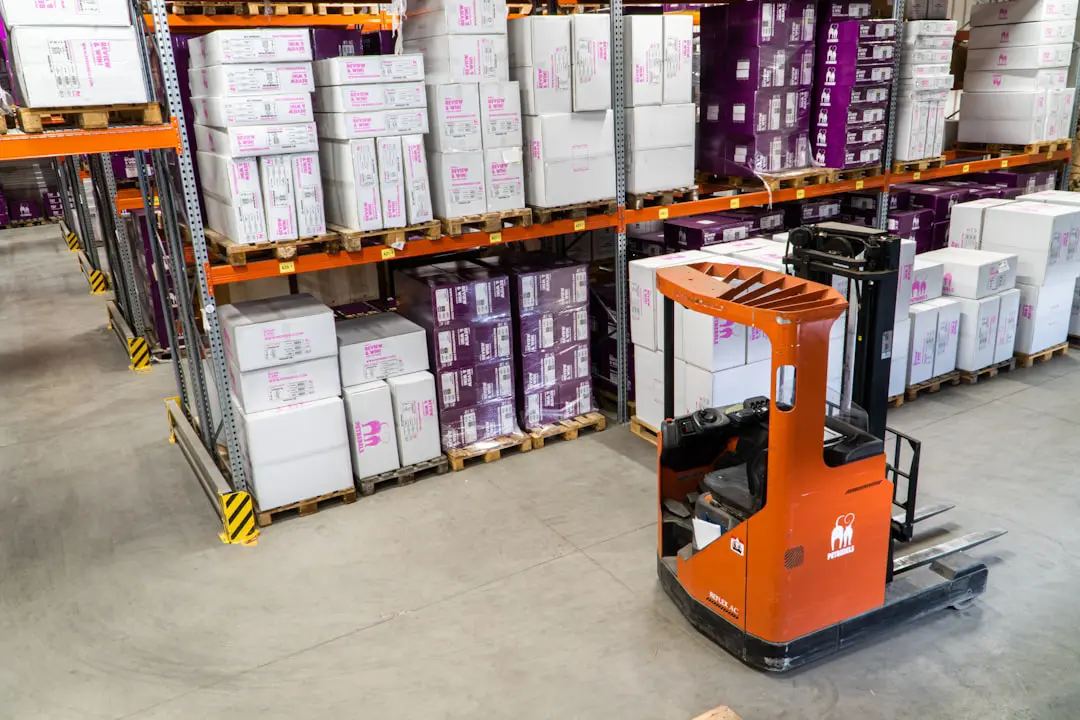
Quick Fact: Companies that implement lean manufacturing can improve productivity by 25-30%.
Streamlined Production Processes
Streamlined production processes are essential for implementing lean manufacturing principles and achieving business expansion in manufacturing. Simplifying workflows and eliminating unnecessary steps can lead to significant gains in efficiency and productivity. One effective technique is process mapping, which involves documenting each step in your production line to identify bottlenecks and redundancies. Additionally, adopting cellular manufacturing can help in organizing workstations and equipment into efficient, process-specific cells. This reduces movement and handling time, further enhancing productivity.
Incorporating standardized work procedures ensures consistency and quality across all production stages. Regular audits and continuous improvement initiatives, such as Kaizen events, can help maintain streamlined processes and adapt to changing market demands. By focusing on streamlined production, your manufacturing operations can become more efficient, cost-effective, and responsive to customer needs, paving the way for sustainable growth.
How to streamline production processes:
- Process Mapping: Identify bottlenecks and redundancies in workflows.
- Cellular Manufacturing: Organize workstations into efficient cells.
- Standardized Work Procedures: Ensure consistency and quality.
- Continuous Improvement: Conduct regular audits and Kaizen events.
By focusing on waste reduction and streamlined production, your operations can become more efficient and cost-effective, paving the way for sustainable growth.
Lean Tools and Techniques
Lean tools and techniques are instrumental in optimizing manufacturing operations and driving growth. Tools like 5S—Sort, Set in order, Shine, Standardize, and Sustain—help in creating an organized and efficient workspace. This not only improves productivity but also enhances safety and quality. Another effective lean tool is Value Stream Mapping (VSM), which visualizes the flow of materials and information through the production process. VSM helps identify inefficiencies and areas for improvement. Kanban systems, which use visual signals to manage workflow, ensure that production is closely aligned with customer demand, reducing overproduction and inventory costs. Techniques such as Total Productive Maintenance (TPM) focus on improving the reliability and efficiency of equipment, minimizing downtime. By integrating these lean tools and techniques, your manufacturing business can achieve significant operational efficiencies, reduce waste, and enhance overall agility, positioning you for sustainable long-term growth.
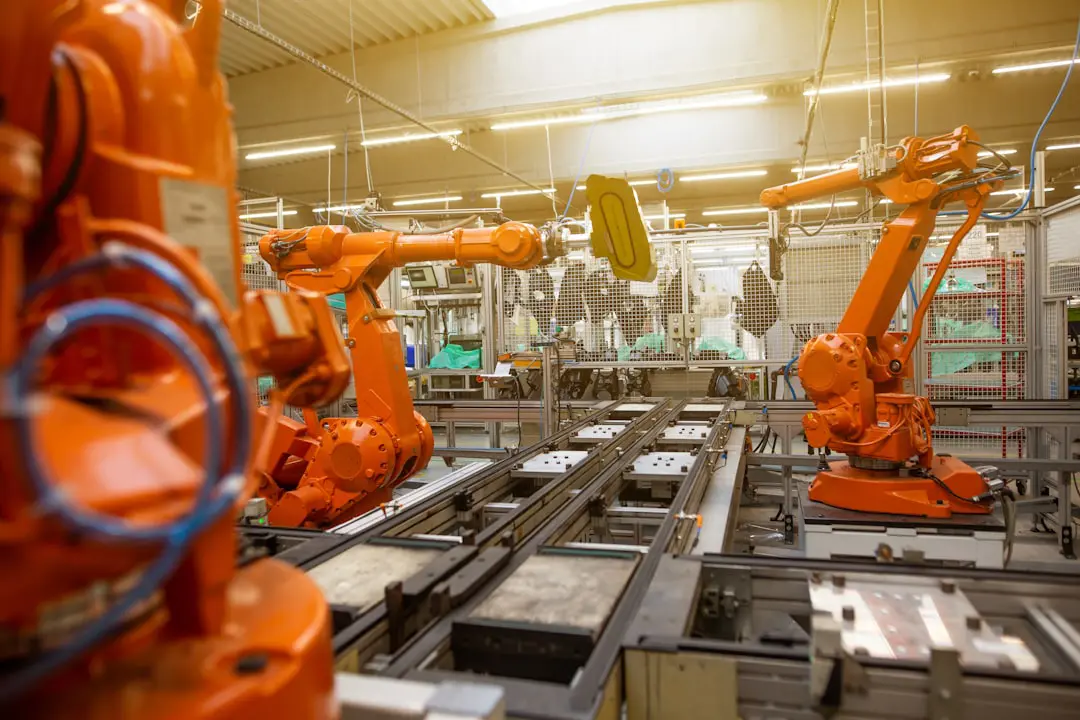
Advanced Robotics Integration
Types of Robotics in Manufacturing
There are various types of robotics in manufacturing, each designed to enhance different aspects of production. Collaborative robots, or cobots, work alongside human operators, increasing efficiency and safety in tasks such as assembly, packaging, and quality inspection. Cobots are easy to program and can be quickly re-deployed to different tasks, making them ideal for dynamic manufacturing environments. Industrial robots, on the other hand, are typically used for high-speed, repetitive tasks like welding, painting, and material handling.
These robots are known for their precision and ability to operate in hazardous environments. Autonomous Mobile Robots (AMRs) are used for material transport within facilities, optimizing the flow of goods and reducing manual labor. Each type of robotics brings unique benefits, and integrating them into your operations can significantly boost productivity, improve quality, and position your manufacturing business for growth.
- Collaborative Robots (Cobots): Work alongside human operators.
- Industrial Robots: Ideal for high-speed, repetitive tasks.
- Autonomous Mobile Robots (AMRs): Optimize material transport within facilities.
Integrating these types of robotics can significantly boost productivity and improve quality.
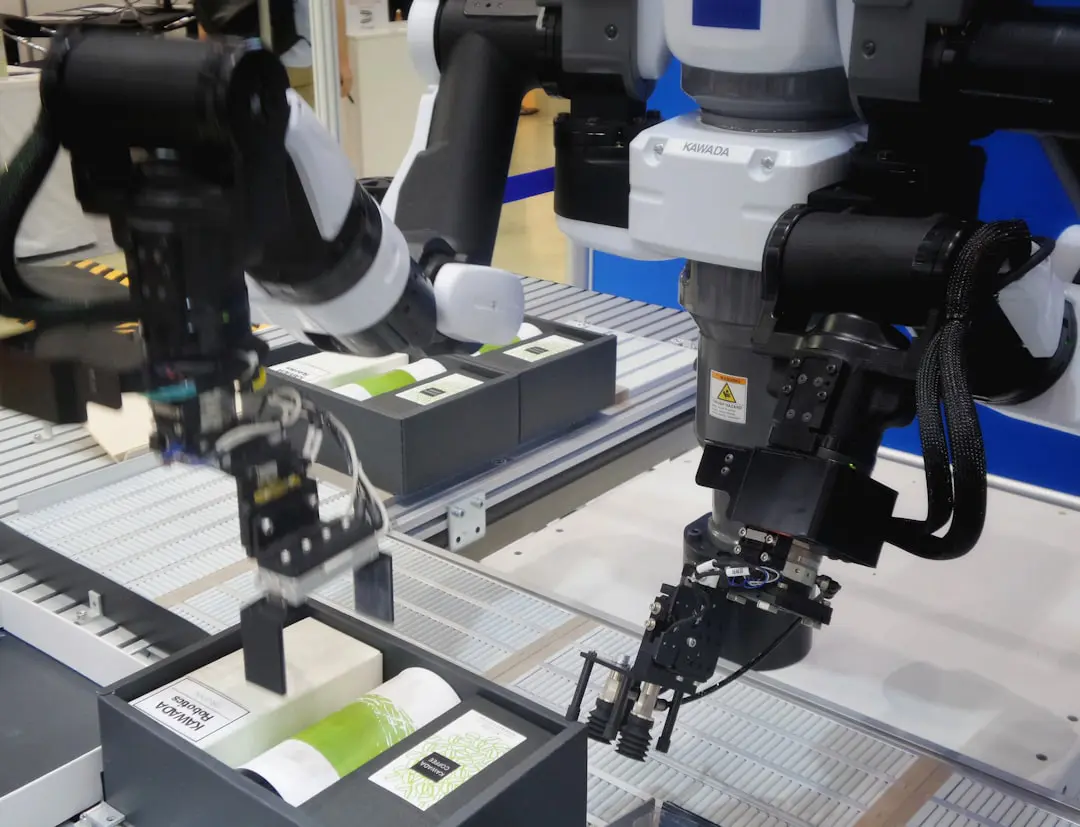
Industry Insight: The global robotics market in manufacturing is expected to reach $70.84 billion by 2023.
Cost-Effectiveness of Automation
Automation in manufacturing offers significant cost-effectiveness, contributing to both short-term savings and long-term financial gains. Initially, the investment in robotics and automation technology may seem substantial, but the return on investment (ROI) is compelling. Automated systems reduce labor costs by performing repetitive and labor-intensive tasks more efficiently and accurately than human workers.
This leads to fewer errors, less waste, and higher quality products. Additionally, automation enhances production speed and consistency, allowing for higher output and faster time-to-market. Predictive maintenance enabled by automation can also lower maintenance costs by preventing unexpected equipment failures. Over time, these savings accumulate, making automation a financially viable strategy for scaling your manufacturing business. By integrating automation, you not only improve operational efficiency but also gain a competitive edge in the market, positioning your company for sustainable growth and profitability.
While the initial investment in robotics may be substantial, the ROI includes:
- Labor Cost Reduction: Automated systems reduce reliance on human labor.
- Higher Quality Products: Fewer errors and less waste.
- Increased Production Speed: Enhanced speed and consistency.
By integrating automation, you not only improve operational efficiency but also gain a competitive edge in the market.
Case Studies of Robotics Success
The success of robotics in manufacturing is well-documented through numerous case studies. For instance, a global electronics manufacturer implemented collaborative robots (cobots) on its assembly lines. This integration led to a 30% increase in production efficiency and a significant reduction in human error. The cobots worked alongside human operators, handling repetitive tasks and allowing employees to focus on more complex duties.
Another example is an automotive company that introduced industrial robots for tasks such as welding and painting. These robots operated with high precision and speed, resulting in a 25% reduction in production time and improved product quality. A food and beverage company deployed Autonomous Mobile Robots (AMRs) for material handling, which optimized internal logistics and reduced manual labor costs by 20%.
These case studies highlight the transformative impact of robotics, demonstrating how advanced robotics integration can drive substantial improvements in efficiency, quality, and cost-effectiveness.
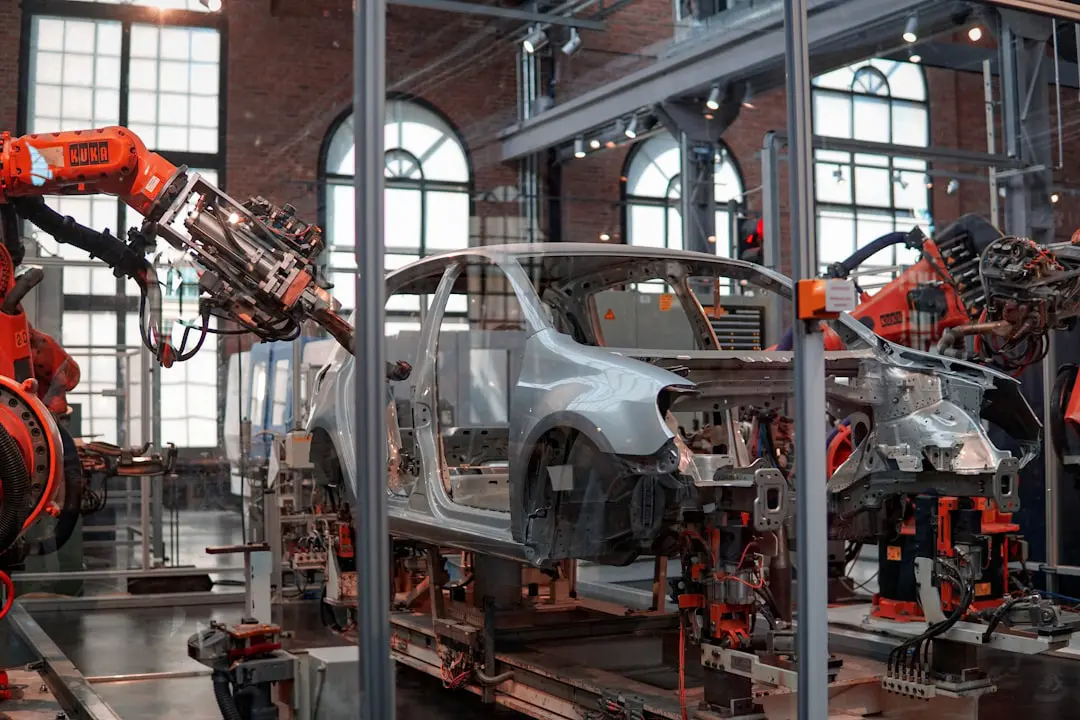
Digital Twin Technology
Understanding Digital Twins
Digital twin technology involves creating a virtual replica of a physical asset, system, or process. This digital counterpart allows manufacturers to simulate, predict, and optimize real-world operations in a virtual environment. By leveraging real-time data from sensors and IoT devices, digital twins provide insights into performance, maintenance needs, and potential failures. This enables proactive decision-making and enhances operational efficiency.
For instance, in a manufacturing setting, a digital twin of a production line can simulate different scenarios to identify bottlenecks and test process improvements without disrupting actual operations. Moreover, digital twins facilitate better collaboration among teams by providing a shared, accurate representation of complex systems.
They also support predictive maintenance by predicting equipment failures and suggesting timely interventions. Understanding and adopting digital twin technology can significantly enhance your manufacturing capabilities, leading to increased productivity, reduced downtime, and a more agile and responsive operation.
Core Functions:
- Simulation: Test scenarios and process improvements.
- Predictive Maintenance: Predict failures and suggest interventions.
- Collaboration Tool: Provides a shared, accurate representation of complex systems.
Benefits for Business Expansion
Digital twin technology offers numerous benefits that are crucial for business expansion in the manufacturing sector. By providing a comprehensive virtual model of your operations, digital twins enable more informed decision-making and strategic planning. This technology allows you to test and refine processes in a risk-free environment, leading to optimized workflows and reduced operational costs.
Additionally, digital twins enhance predictive maintenance, minimizing downtime and extending the lifespan of equipment. They also improve product quality by enabling more precise control over manufacturing processes. For companies looking to scale, digital twins offer the flexibility to simulate expansion scenarios, assess the impact of new equipment, and optimize resource allocation.
This results in a more agile and resilient operation capable of adapting to market demands. Embracing digital twin technology as part of your innovative manufacturing strategies can significantly contribute to sustainable growth and long-term success.
Advantages of Digital Twins:
- Informed Decision-Making: Enhanced strategic planning and process optimization.
- Predictive Maintenance: Minimize downtime and extend equipment lifespan.
- Quality Improvement: More precise control over manufacturing processes.
- Agility: Simulate expansion scenarios and optimize resource allocation.

How to Implement Digital Twins
Implementing digital twin technology requires a strategic approach and careful planning. First, identify the assets or processes that will benefit most from having a digital twin. Next, equip these assets with IoT sensors to collect real-time data.
This data forms the foundation of your digital twin, enabling accurate simulations and predictions. Choose a robust digital twin platform that integrates seamlessly with your existing systems and supports advanced analytics. Collaborate with IT and operations teams to ensure proper data integration and cybersecurity measures.
Training your workforce on how to use and leverage digital twins is also crucial. Start with a pilot project to validate the technology and demonstrate its value before scaling up. Regularly update and maintain your digital twin to reflect changes in the physical asset or process. By following these steps, you can successfully implement digital twins and unlock their full potential for improving efficiency, productivity, and business growth.
What are the steps to implement digital twins?
- Identify Assets: Choose processes that will benefit most from a digital twin.
- Deploy IoT Sensors: Collect real-time data.
- Choose a Platform: Select a robust digital twin platform.
- Collaborate: Ensure seamless data integration and cybersecurity with IT and operations teams.
- Train Workforce: Educate employees on using digital twins.
- Pilot Project: Start small to validate and demonstrate value.
- Maintain: Regular updates to reflect changes in physical assets.
By following these steps, you can successfully implement digital twins and enhance efficiency and productivity.
Sustainable Manufacturing Practices
Eco-Friendly Materials Usage
Using eco-friendly materials is a pivotal aspect of sustainable manufacturing practices. These materials, often derived from renewable resources, reduce environmental impact and enhance the sustainability of your operations. For example, biodegradable plastics, recycled metals, and organic fibers are increasingly popular alternatives to traditional materials. Integrating these into your manufacturing processes can significantly reduce waste and lower your carbon footprint. Moreover, adopting eco-friendly materials can improve your brand’s reputation, attracting environmentally conscious consumers and partners. It also helps in complying with regulatory standards and avoiding potential fines. Additionally, sourcing sustainable materials often involves collaborating with suppliers who share your commitment to environmental responsibility, fostering stronger, more ethical supply chains. By prioritizing eco-friendly materials, your manufacturing business can contribute to a more sustainable future while also positioning itself as a leader in innovative, responsible manufacturing practices. This approach not only benefits the planet but also supports long-term business growth.
Benefits of using eco-friendly materials:
- Environmental Impact: Reduce waste and lower carbon footprint.
- Consumer Appeal: Attract environmentally conscious consumers.
- Regulatory Compliance: Meet standards and avoid fines.
- Stronger Supply Chains: Collaborate with ethical suppliers.

Energy-Efficient Production Methods
Energy-efficient production methods are essential for sustainable manufacturing practices and can lead to significant cost savings. Implementing energy-efficient machinery and equipment reduces energy consumption and decreases greenhouse gas emissions. Techniques such as using variable frequency drives (VFDs) on motors optimize energy use by adjusting the motor speed to match the required load. Additionally, incorporating energy-efficient lighting, such as LED systems, can lower electricity usage in your facility.
Embracing renewable energy sources, like solar or wind power, further enhances your production’s sustainability. Regular energy audits can identify inefficiencies and potential areas for improvement. Smart energy management systems can monitor and control energy use in real time, ensuring optimal efficiency. By adopting these methods, you not only reduce operational costs but also contribute to environmental conservation.
Energy-efficient production is a key element in innovative manufacturing strategies, supporting both ecological responsibility and business expansion.
Techniques to maintain an energy-efficient operation:
- Energy-Efficient Machinery: Reduce energy consumption and greenhouse gas emissions.
- Variable Frequency Drives (VFDs): Optimize motor energy use.
- LED Lighting: Lower electricity usage.
- Renewable Energy Sources: Incorporate solar and wind power.
- Energy Audits and Management Systems: Monitor and control energy use in real-time.
Long-Term Benefits of Sustainability
Embracing sustainability in manufacturing offers numerous long-term benefits that extend beyond environmental impact. Firstly, sustainable practices often lead to cost savings through efficient resource use and reduced waste. Over time, energy-efficient production methods and eco-friendly materials can significantly lower operational costs.
Additionally, sustainability enhances brand reputation, attracting customers and partners who value environmental responsibility. This can lead to increased market share and customer loyalty.
Regulatory compliance is another benefit, as governments worldwide are implementing stricter environmental laws. By adopting sustainable practices now, you can avoid future penalties and stay ahead of industry regulations. Moreover, sustainability fosters innovation, driving the development of new products and processes that can open up new markets and revenue streams. Overall, the long-term benefits of sustainability include improved financial performance, enhanced brand value, and a stronger, more resilient business capable of thriving in an increasingly eco-conscious market.
So, my short answer is…
The five innovative manufacturing strategies outlined above are essential for scaling your business effectively. By embracing advanced technologies, fostering a culture of continuous improvement, leveraging data analytics, prioritizing sustainability, and optimizing supply chain management, you position your business for sustained growth and competitiveness in the market.

